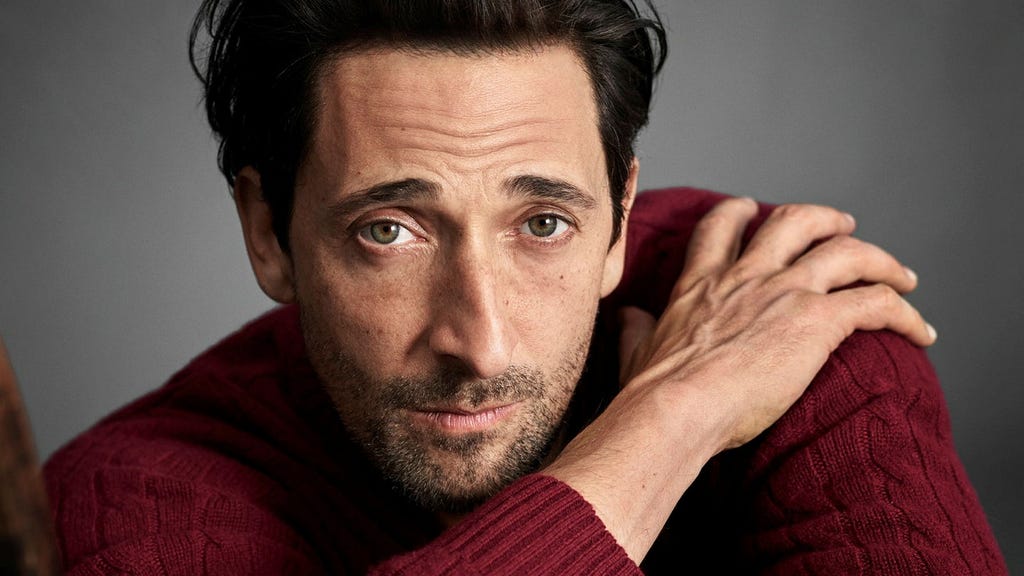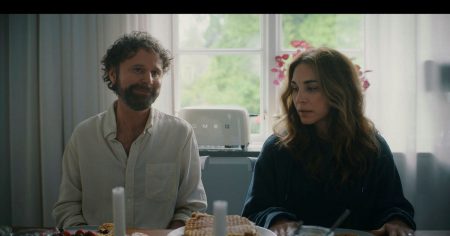Adrien Brody, acclaimed for his Oscar-winning portrayal of Holocaust survivor Wladyslaw Szpilman in ”The Pianist,” returns to the theme of survival and displacement in Brady Corbet’s ”The Brutalist.” Brody embodies László Tóth, a fictional Hungarian-Jewish architect who, after enduring the horrors of concentration camps, seeks refuge and a new beginning in post-war America. The film explores Tóth’s journey as he grapples with the psychological scars of the past while striving to establish himself in a new land, resonating deeply with Brody’s own family history of immigration. ”The Brutalist” premiered at the Venice Film Festival to a thirteen-minute standing ovation, signifying the emotional power of the story and Brody’s performance, reminiscent of the profound impact of ”The Pianist.”
Tóth’s path to rebuilding his life intersects with Harrison Lee Van Buren Sr., a wealthy and enigmatic industrialist played by Guy Pearce. Van Buren commissions Tóth to design a monumental cultural center in Pennsylvania’s steel belt as a tribute to his deceased mother. This pivotal encounter sets the stage for a complex and tense relationship between the two men, exploring themes of power, artistic expression, and the immigrant experience. The narrative delves into Tóth’s yearning for acceptance and creative fulfillment, echoing Brody’s own personal connection to these themes, both as an actor and as someone who has undertaken extensive renovation projects, demonstrating a passion for creating something of enduring value.
The film’s production mirrored Tóth’s journey in several ways. Initially intended for Joel Edgerton, the role ultimately landed with Brody, who felt a profound connection to the character’s Hungarian heritage, reflecting his own upbringing in a Hungarian-speaking household. Filming primarily took place in Hungary, immersing Brody in the language and culture, allowing him to refine his portrayal of Tóth’s Hungarian dialect with the aid of a dialect coach and AI technology. The tight schedule and demanding nature of the independent production pushed Brody to immerse himself fully in the role, constantly preparing for and delivering emotionally charged performances.
Director Brady Corbet, known for his previous films ”The Childhood of a Leader” and ”Vox Lux,” drew inspiration from architectural literature, particularly Hilary Thimmesh’s ”Marcel Breuer and a Committee of Twelve Plan a Church,” which chronicles the challenges faced by Bauhaus architect Marcel Breuer during the construction of a church in Minnesota. Corbet saw parallels between Breuer’s experience and Tóth’s, highlighting the microaggressions faced by a Hungarian Jew in post-war America. Further inspiration came from Jean-Louis Cohen’s architectural writings, particularly his exploration of the relationship between post-war psychology and architecture. Corbet aims to evoke the imposing and often polarizing nature of Brutalist architecture through the film’s structure and style, creating a cinematic experience that mirrors the themes of the narrative.
Corbet’s vision for ”The Brutalist” extends beyond the narrative to the film’s aesthetic and technical aspects. He consciously chose to shoot the film in the VistaVision format, a widescreen process that enhances the visual impact and immerses the viewer in the world of the story. This choice reflects Corbet’s belief in the power of the cinematic experience, particularly in an era of streaming and home entertainment, emphasizing the importance of seeing films on the big screen. The film also carries a personal dedication to Corbet’s late friend Scott Walker, a musician who collaborated on Corbet’s previous films and whose experimental spirit resonated with the director’s own artistic sensibilities.
The film explores the cost of creating a masterpiece, both in terms of personal sacrifices and the compromises artists sometimes make. Corbet admits to the challenging and arduous process of filmmaking but remains driven by a desire to create “crazy, raw, and beautiful films.” He identifies with the polarizing nature of Brutalist architecture, seeing parallels in his own filmmaking style, which often challenges viewers with its unconventional structure and omissions. The film stands as a testament to the complexities of artistic creation, the struggles of the immigrant experience, and the enduring power of human resilience in the face of adversity. ”The Brutalist” marks a significant return for Adrien Brody to a theme that profoundly shaped his career, promising a powerful and thought-provoking cinematic experience.














